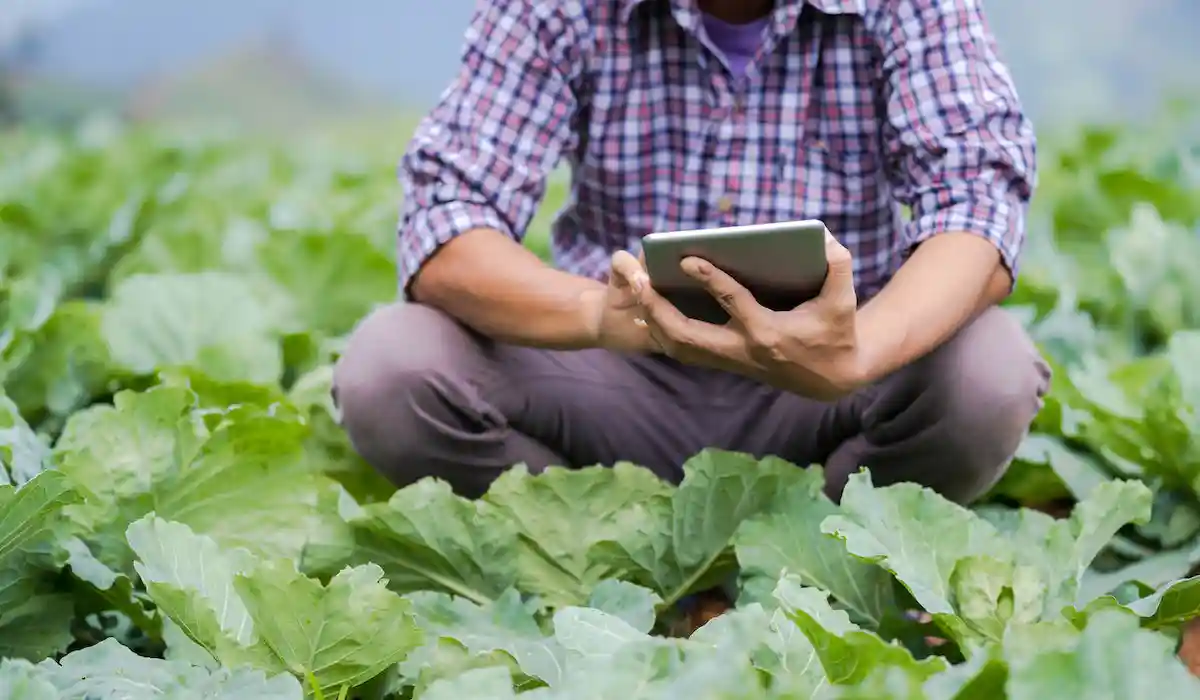Modern-day agriculture is at the point of a digital revolution, way to the internet of Factors (IoT). This transformative generation is reshaping the manner farmers control their operations, increasing performance, sustainability, and crop yields. In this newsletter, we can discover how the Internet of Factors is making its mark in agriculture and revolutionizing farming practices.

Understanding the internet of things (IoT)
Earlier we delve into its agricultural packages, let’s grasp the idea of IoT. The net of things refers to a community of interconnected devices, sensors, and equipment that talk and share statistics over the internet. These devices can collect and alternate facts without human intervention.
Key Components of IoT in Agriculture
In agriculture, IoT consists of several key additives:
Sensors: these small devices can measure numerous parameters which include soil moisture, temperature, humidity, or even the health of farm animals.
Connectivity: IoT relies on internet connectivity to transmit information from sensors and devices to centralized systems or the cloud.
Facts Analytics: The amassed records are processed and analyzed to offer actionable insights to farmers.
Remodeling Farming Practices
Now, permit’s explore how IoT is revolutionizing farming practices.
1. Precision Agriculture
IoT enables precision agriculture, wherein farmers use statistics from sensors to optimize crop management. They can precisely manage irrigation, fertilization, and pesticide software, reducing waste and environmental impact.
2. Clever Irrigation
With IoT, farmers can reveal soil moisture stages in real time. Computerized systems can regulate irrigation schedules primarily based on actual plant desires, protecting water and improving crop fitness.
3. Livestock tracking
Sensors connected to farm animals can track their fitness and behavior. Farmers can acquire alerts for ability issues, ensuring well-timed intervention and better animal welfare.
4. Crop health tracking
Drones prepared with IoT sensors can fly over fields, capturing pix and records to assess crop health. Early detection of illnesses or pest infestations permits for focused remedy.
5. Predictive Analytics
IoT statistics mixed with advanced analytics can provide farmers with predictive insights. They can expect climate styles, market trends, and crop yields, to help in decision-making.
6. Supply Chain Optimization
IoT can improve the efficiency of the agricultural supply chain. Sensors music the circumstances of crops during transportation, reducing spoilage and waste.
7. Faraway tracking
Farmers can remotely reveal their operations through smartphones or computers. This lets in for higher control, even from afar.
Advantages and challenges
At the same time as IoT in agriculture offers numerous blessings, it additionally comes with demanding situations:
Blessings:
Expanded Productivity: Farmers can optimize sources and make information-driven selections, leading to higher yields.
Sustainability: reduced aid use and targeted interventions make contributions to greater sustainable farming practices.
Cost Financial Savings: Automation and efficiency upgrades can lower operational prices.
Challenges:
Records Protection: defensive sensitive farm data from cyber threats is important.
Excessive Initial Costs: enforcing IoT infrastructure may be costly for small-scale farmers.
Education: Farmers want education to successfully use IoT tools and interpret statistics.
Conclusion
The Internet of Factors is a recreation-changer in agriculture, presenting farmers with effective tools to improve productivity, sustainability, and profitability. As technology continues to conform, its integration into farming practices will best emerge as a greater sizeable, making sure of a brighter and greater efficient destiny for agriculture.
FAQs
Q1: How can IoT gain small-scale farmers?
IoT can advantage small-scale farmers by helping them optimize aid use, reduce waste, and make information-driven choices, ultimately growing their yields and profitability.
Q2: Are there privacy concerns with IoT in agriculture?
Yes, there are privacy issues, especially regarding the gathering and sharing of farm information. Farmers need to choose reliable IoT companies and apprehend facts and security measures.
Q3: Can IoT be used in organic farming?
Yes, IoT may be implemented in organic farming practices, supporting farmers in revealing soil fitness, reducing water utilization, and optimizing resource allocation at the same time as adhering to organic principles.
Q4: Are there authorities incentives for adopting IoT in agriculture?
Some governments offer incentives, subsidies, or grants to inspire farmers to adopt IoT technologies as a part of their efforts to promote sustainable agriculture.
Q5: what is the future of IoT in agriculture?
The destiny of IoT in agriculture is promising, with ongoing improvements in generation and accelerated adoption. It will continue to play a critical role in addressing worldwide meal security challenges.
